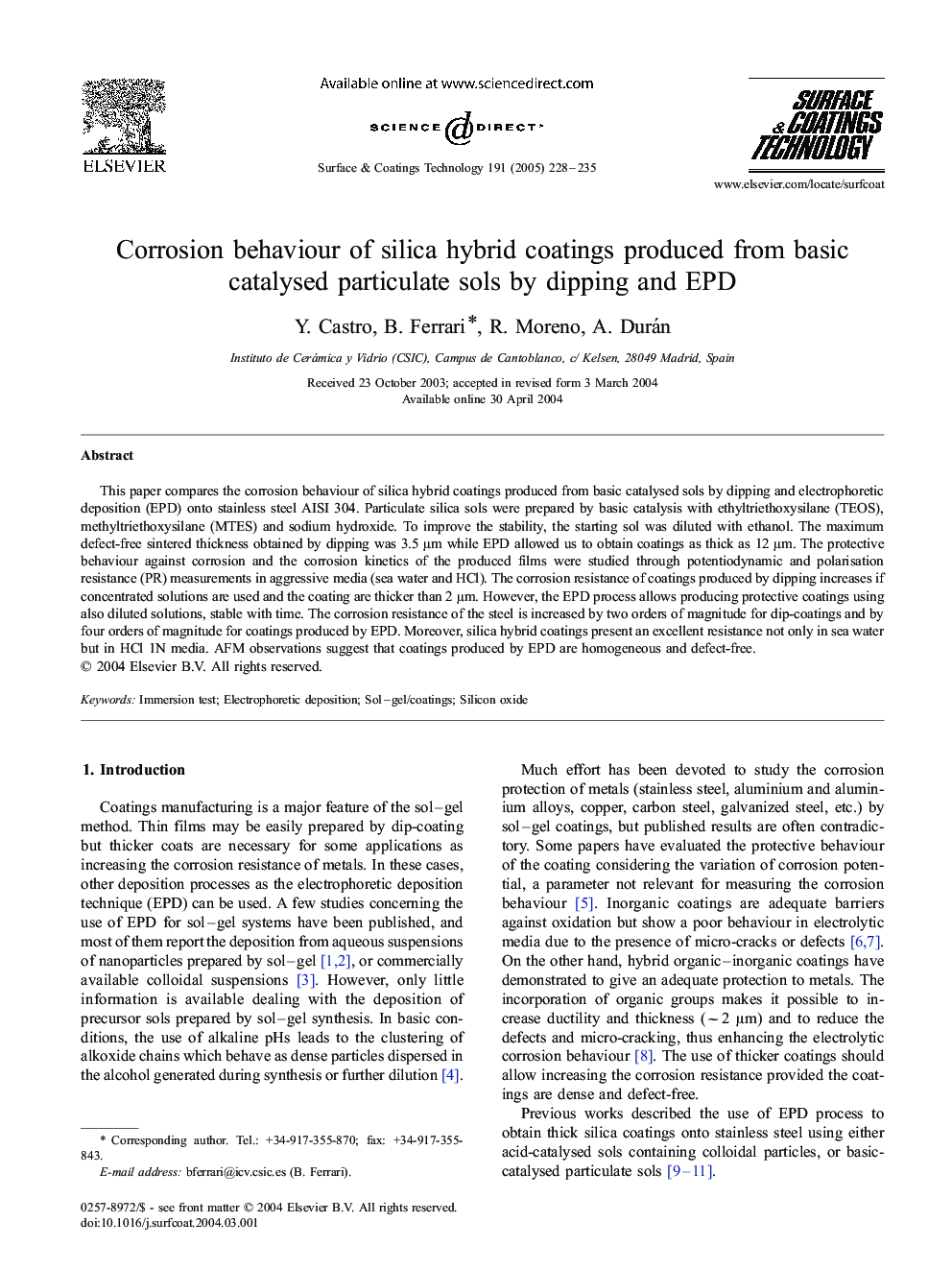| Article ID | Journal | Published Year | Pages | File Type |
|---|---|---|---|---|
| 9809918 | Surface and Coatings Technology | 2005 | 8 Pages |
Abstract
This paper compares the corrosion behaviour of silica hybrid coatings produced from basic catalysed sols by dipping and electrophoretic deposition (EPD) onto stainless steel AISI 304. Particulate silica sols were prepared by basic catalysis with ethyltriethoxysilane (TEOS), methyltriethoxysilane (MTES) and sodium hydroxide. To improve the stability, the starting sol was diluted with ethanol. The maximum defect-free sintered thickness obtained by dipping was 3.5 μm while EPD allowed us to obtain coatings as thick as 12 μm. The protective behaviour against corrosion and the corrosion kinetics of the produced films were studied through potentiodynamic and polarisation resistance (PR) measurements in aggressive media (sea water and HCl). The corrosion resistance of coatings produced by dipping increases if concentrated solutions are used and the coating are thicker than 2 μm. However, the EPD process allows producing protective coatings using also diluted solutions, stable with time. The corrosion resistance of the steel is increased by two orders of magnitude for dip-coatings and by four orders of magnitude for coatings produced by EPD. Moreover, silica hybrid coatings present an excellent resistance not only in sea water but in HCl 1N media. AFM observations suggest that coatings produced by EPD are homogeneous and defect-free.
Related Topics
Physical Sciences and Engineering
Materials Science
Nanotechnology
Authors
Y. Castro, B. Ferrari, R. Moreno, A. Durán,
